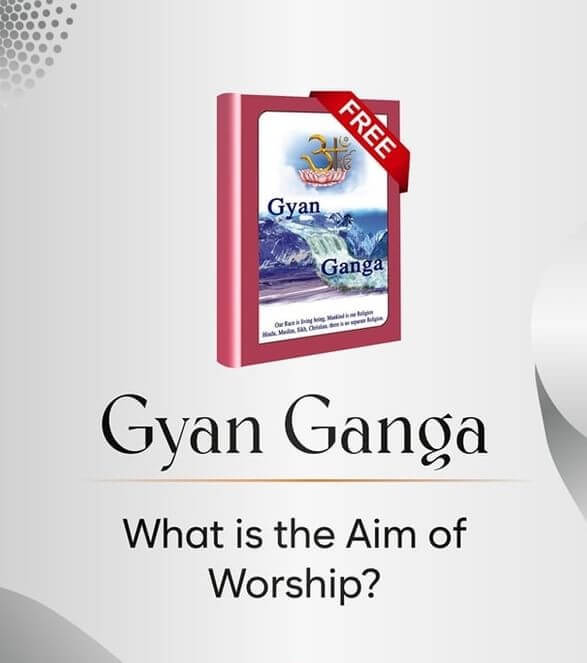A Baseless Account of Creation of Universe by Other Saints
Creation of Universe / A Baseless Account of Creation of Universe by Other Saints
A Baseless Account of Creation of Universe by Other Saints
What do other saints say about the Creation of Nature? Below are the perspectives of the Radhaswami Sect and the Dhan-Dhan Satguru Sect on this topic.
From the holy book Jeevan Charitra Param Sant Baba Jaimal Singh Ji Maharaj (Pages 102-103, “Srishti ki Rachna” published by Sawan Kripal Publication, Delhi):
(“Pehle SatPurush nirakaar tha, fir izhaar (aakaar) mein aya to oopar ke teen nirmal mandal (Satlok, Alakhlok, Agamlok) ban gaya tatha prakash tatha mandalon ka naad (dhuni) ban gaya.”)
“In the beginning, SatPurush was formless, then when He manifested (appeared in form), He became the three pure regions (Satlok, Alakhlok, Agamlok) above and became light and the sound of regions.”
From the holy book Saarvachan (Nasar), published by Radhaswami Satsang Sabha, Dyalbagh, Agra (Page 8, “Srishti Ki Rachna”):
(“Pratham dhundhukaar tha. Usmein Purush sunn samaadh mein the. Jab kuchh rachna nahin huyi thi. Fir jab mauj huyi tab shabd prakat huya aur usse sab rachna huyi, pehle Satlok aur fir Satpurush ki kala se teen lok aur sab vistaar huya.”)
“In the beginning, there was darkness. Purush was in silent meditation in it. At that time, there was no creation. Then when He wished, then Shabd appeared and everything was created from it. First of all, Satlok and then with SatPurush’s skill, three loks (places) and everything else developed.”
This knowledge can be compared to a scenario where a young man goes for a job interview. The employer asks, “Have you read the ‘Mahabharat’?” The young man replies, “It’s at my fingertips.” When asked to name the five Pandavas, he responds, “One was Bheem, one was his elder brother, one was younger, there was one more, and I’ve forgotten the last one.” Similarly, the understanding of the creation of nature in the mentioned context is incomplete and superficial.
Conclusions from the writings of saints who extol the glory of SatPurush and Satlok, and who provide five mantras (Omkaar, Jyoti Niranjan, Raranka, SohM, Satyanaam) or three mantras (Akaal Murti, SatPurush, Shabd Swaroopi Ram) are as follows:
In Santmat Prakash, Part 3, page 76, it states that "Sachkhand or Satnaam is the fourth lok (place)." Here, ‘Satnaam’ is described as a ‘Place.’ Additionally, on page 79, it is mentioned that there are four forms of Ram: the first Ram is ‘Dashrat’s Son,’ the second is ‘Man,’ the third is ‘Brahm,’ and the fourth Ram is ‘Satnaam,’ which is the true Ram.
In Santmat Prakash, Part 1, page 17, it is stated that "Satlok is synonymous with Satnaam." Similarly, in Saar Vachan Nasar Yaani Vartik, page 3, it is mentioned that "Radhaswami is the supreme place, described by saints as Satlok, Sachkhand, Saarshabd, Satshabd, Satnaam, and SatPurush." This description is also confirmed in Saar Vachan (Nasar), published from Agra, page 4.
In the holy book Sachkhand Ki Sadak, page 226, it is stated: "The realm of saints is Sachkhand or Satlok, also known as Satnaam, Satshabd, and Saarshabd."
Important: The previous explanation is akin to someone who has never seen a city, a car, petrol, or a driver claiming to visit the city and enjoy car rides. When asked about what a car, petrol, or a driver is, this person responds that all these are essentially the same thing—calling a city a car, petrol a car, a driver a car, and even the street a car.
Let us reflect: SatPurush is the Complete or Supreme God, and Satnaam is the mantra that includes the codes for ‘Om’ and ‘Tat.’ Saarnaam, which is provided by a Complete Guru, follows this. Both Satnaam and Saarnaam are mantras for recitation. Satlok is the realm where SatPurush resides. It is up to the pious souls to discern what is true and what is false.
← Creation of the Universe in the Sacred Teachings of Nanak Sahib
